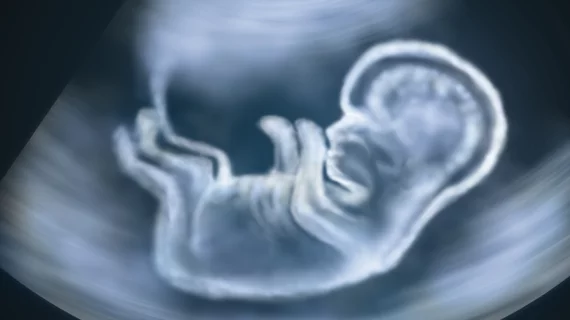AI model could open doors for greater access to obstetric ultrasound
Artificial intelligence models can assist with fetal ultrasounds conducted by novice operators in underserved, low resource areas where access to medical imaging is extremely limited, according to a new study.
Research published recently in NEJM Evidence revealed that an artificial intelligence model can estimate gestational age using just a quick sweep with accuracy that rivals that of formally trained sonographers completing fetal biometry scans.
“Ultrasound is like a stethoscope to the modern obstetrician. We use it all day, every day,” Institute for Global Health & Infectious Diseases (IGHID) Associate Director Jeff Stringer, MD, said in a statement.
Stinger, who is a professor of obstetrics and gynecology and director of the University of North Carolina Division of Global Women’s Health, and his wife, Elizabeth Stringer, MD, associate professor of obstetrics and gynecology, helped spearhead the research after being inspired by their work as obstetricians in Lusaka, Zambia.
Compared to patients in well-developed regions, who undergo multiple ultrasounds during pregnancy, women in low resource areas, such as Zambia, might not receive a scan throughout the duration of their entire pregnancy, Stinger explained. Without ultrasound, establishing gestational age is difficult and often inaccurate. But offering imaging services, such as fetal ultrasound, is dependent upon the funds to obtain expensive equipment and employing a trained sonographer with the skills to conduct the imaging. This is where less developed and low resource areas face dilemmas.
As proven in a plethora of research for other imaging applications, the use of artificial intelligence could offer a solution to such access dilemmas. In this case, researchers developed an artificial intelligence model that can estimate gestational age based on a blind ultrasound sweep of the gravid abdomen.
The study consisted of 4,695 pregnant volunteers in North Carolina and Zambia. Each woman underwent a blind ultrasound sweep of the abdomen alongside standard fetal measurements. Scans were conducted on both commercial ultrasound equipment and on an inexpensive CRT-based, battery-powered device. Using the sweeps, researchers trained a neural network to estimate gestational age, which had been established prior.
The AI model was tested on three different datasets—a general test set (random subset of data), an IVF set (women who conceived by in vitro fertilization) and a novice test set of individuals who whose sweeps were completed by a midwife using the battery-powered equipment (Butterfly iQ). In all three test sets the neural network performed as well or better than trained sonographers who established age based on detailed biometric data.
“These results foretell a future where all pregnant people – not just those who live in rich countries – can access the diagnostic benefits of obstetric ultrasound,” Stringer said.
Related ultrasound content:
O-RADS externally validated for differentiating between benign and malignant ovarian lesions
These ultrasound features predict ovarian cancer
Ultrasound features that indicate difficulty of vaginal childbirth
Ultrasound images reveal how smoking before conceiving impacts embryonic development
These ultrasound features distinguish between COVID vaccine-related and malignant adenopathy

